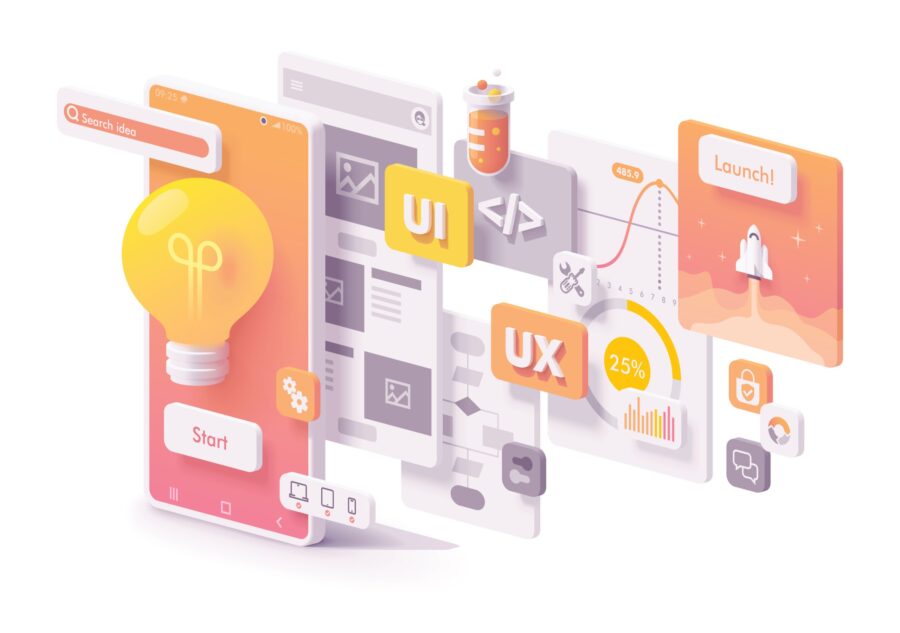
It’s always difficult to predict the future with certainty, but based on current trends and emerging technologies, here are some potential app development trends for 2023:
Augmented Reality (AR) and Virtual Reality (VR)
AR is a technology that overlays digital information in the real world. This can be accomplished through the use of a smartphone camera, a special headset or glasses, or other devices. AR can be used to provide users with information about their surroundings, enhance educational or training experiences, create immersive gaming experiences, and more.
VR, on the other hand, is a technology that completely immerses users in a digital environment. This is typically accomplished through the use of a headset or other specialized equipment that provides a high-quality, 3D experience. VR can be used for gaming, training, education, and other applications where a fully immersive experience is desired.
With the increasing adoption of AR/VR technologies, we can expect more apps to incorporate these features in 2023. AR/VR app development could include everything from games to training and educational apps, as well as retail and e-commerce applications.
Internet of Things (IoT)
The idea behind IoT is to enable devices to collect, exchange, and analyze data to improve efficiency, automate processes, and ultimately enhance our quality of life. For example, a smart thermostat in a home might be able to automatically adjust the temperature based on the user’s preferences and usage patterns, while a connected car might be able to communicate with others on the road to avoid accidents and optimize traffic flow. Same for mobile apps, which can adapt to user preferences using other devices’ settings.
As more and more devices become connected to the internet, app developers will need to find new ways to create apps that integrate with and control these devices. IoT could include everything from home automation systems to healthcare applications.
Of course, as with any new technology, there are also potential risks and challenges associated with IoT. Security and privacy concerns are among the most pressing, as the more devices that are connected to the internet, the more opportunities there are for hackers to exploit vulnerabilities.
Overall, though, the potential benefits of IoT are vast and exciting, and we can expect to see continued growth and innovation in this area in the years to come.
Artificial Intelligence (AI) and Machine Learning (ML)
AI and ML are already being used in many apps, and this trend will continue in 2023. Apps that leverage these technologies could include everything from personal assistants to chatbots and customer service applications.
In app development, AI and ML can be used to improve a variety of features and functions, including:
- Personalization: By analyzing user data and behavior, developers can use AI and ML algorithms to provide personalized recommendations and content, as well as personalized notifications and alerts.
- Natural Language Processing (NLP): NLP technologies can be used to enable voice commands and chatbots that can understand and respond to natural language input from users.
- Image and Video Recognition: AI and ML algorithms can be used to analyze and recognize images and videos, allowing for features like image search, facial recognition, and augmented reality experiences.
- Predictive Analytics: ML algorithms can be used to analyze user data and predict user behavior, allowing for targeted marketing campaigns and other personalized experiences.
- Process Automation: AI and ML can be used to automate routine tasks, freeing up developers to focus on more complex problems and improving the overall efficiency of the app development process.
Progressive Web Apps (PWAs)
PWAs are web applications that use modern web technologies to provide an app-like experience to users.
PWAs offer a compelling alternative to traditional app development, with many benefits that make them well-suited to many types of apps and use cases. While there are some limitations and challenges associated with PWA development, the future looks bright for this emerging technology.
It helps to reduce the web app development cost and time-to-market. As more users adopt mobile devices, we can expect to see more PWAs that provide fast, responsive, and engaging experiences.
As for forecasts, PWAs are expected to continue growing in popularity in the coming years, as more businesses and developers realize the benefits of this approach to app development. According to a report by Statista, the number of PWAs is expected to exceed 6.1 billion by 2025, representing a significant portion of the overall app market.
Blockchain
Blockchain is a distributed ledger technology that allows multiple parties to record and verify transactions securely and transparently. While most commonly associated with cryptocurrencies like Bitcoin, blockchain has a range of other potential applications, including in the app development world.
One of the most promising use cases for blockchain in app development is in creating decentralized apps, or dApps. These apps use blockchain to enable secure and transparent data sharing and transactions without the need for a centralized authority or intermediary. dApps can be used in many industries and use cases, including finance, supply chain management, and social networking.
While still a nascent technology, blockchain has the potential to revolutionize a variety of industries, including app development. In 2023, we may see more apps that incorporate blockchain technology, particularly in finance, healthcare, and supply chain management.
Conclusion
Overall, we can expect to see continued innovation and growth in the app development space in 2023, with new technologies and trends emerging to meet the needs of users and businesses alike.
